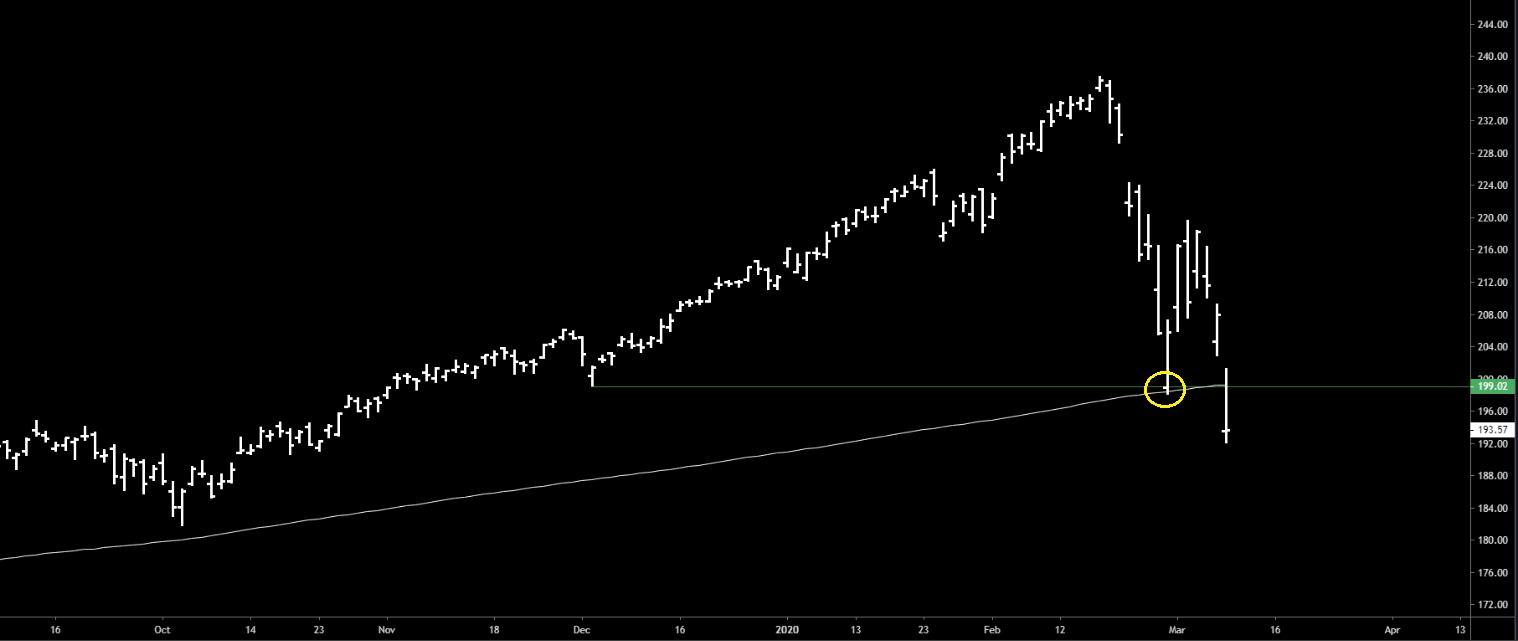Bounce Trades (against trend)
Buying stocks for a bounce in a corrective phase / downtrend / crash requires a different approach than buying a pullback in an uptrend or searching for a bottom but some of the concepts are similar. The chart of the QQQ / Nasdaq ETF on the left shows a good set up for a bounce trade.
Firstly, we look for stocks/instruments with some relative strength. In the example on the left, the QQQ was approaching its 200dma when the SPX had already tested and broken its 200dma several sessions earlier.
Secondly, we look for good confluence of supports. A major pivot combined with the 200dma should combine to create a support level.
Once we have identified the stock and support level, there are further considerations.
Opening near the support level and testing it on an opening drop, or opening just below the support and then trading quickly back above provide ideal entry points. Opening too far below the support and then driving lower means no entry.
Once the support has been tested we want a strong move away. If the session chops around the level too long and closes near the lows it's best to abort the trade as the risk is there is a further gap lower the next session. This is especially true on a Friday. We can see a good reversal candle in our QQQ example and we can then stay with the trade.
Ideally we see a strong day 2 as we do in the example.
Because we are buying for a bounce and not looking for a bottom, we must be looking to exit on any weakness, especially on day 3. In our example we see a failed new high (a gap higher and fall back below day 2's high) on day 3 and this is where we would exit.

